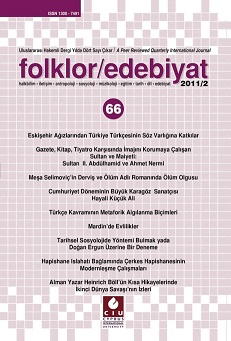Yazınsal Çeviride Biçem Aktarımı Sorunu
The Problem of Style Transfer at Literary Translation
Author(s): Ayalp Talun İnceSubject(s): Novel, Turkish Literature, Translation Studies, Theory of Literature
Published by: Uluslararası Kıbrıs Üniversitesi
Keywords: literary translation; style; translation science; style translation; stylistic; style analysis;
Summary/Abstract: In this study, the German translation of Orhan Pamuk’s novel titled “Beyaz Kale” has been examined through Nord’s functional translation theory. In this paper, by determining the components of the functional text, attempts have been made to illustrate a text analysis before translation and attract attention to the functional elements required in a translation. In the analysis and translation of the texts based on the theory of functionality, after the designation of the functional constituents used in the text in question, attempts have been made to comment on their roles in the text. The process of interpretation, is, in a way, the indication of a cognitive process realised by every translator in the course of translation. Subsequently, studies and researches must be accomplished to enrich existing data and all the while, textual data both inside and outside the text must be broadened. This point of view has also been adopted by P. Kussmaul (1994), who has worked on creativity and cognitive processes in the translation. Correspondingly, another way to be used is to scan for elements unnoticed before through repetitive reading. Only after the completion of these drafts under discussion is it possible to scan and reveal the related textual elements. The textual constituents examined under the title of functionality components are the expressions, mainly functions of message, which the author tries to charge to the text in source language, used in a way by the author to address readers. These are expressed by the formula known as Lasswell-Equation in the science of translation. The next step is to determine whether the elements scanned and revealed in the source text have been taken into consideration or not by means of their examination in the target text. If they are taken into consideration in the translation, the functions that the elements bear, their significance for the text and to what extent it has been reflected in the text have been studied. In cases of no observed functional coherence, suggestions about how the function can be explicitly shown in the target language text have been made. Efforts have been made to put forward proposals for solution even when there is not a functional element in the translation at all. This paper has no direct criticism purpose, but it is an attempt to suggest another method concerning the fact that functionality must be taken into consideration in the translation of literary texts.
Journal: Folklor/Edebiyat
- Issue Year: 17/2011
- Issue No: 66
- Page Range: 105-120
- Page Count: 16
- Language: Turkish

